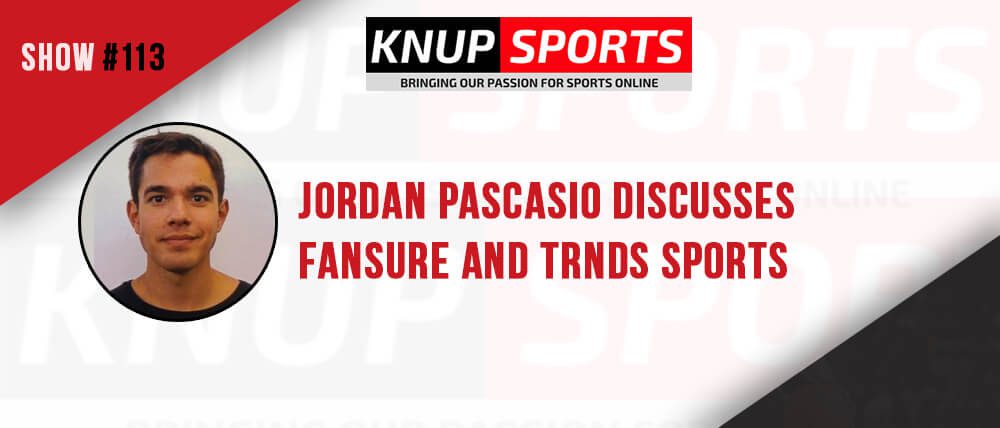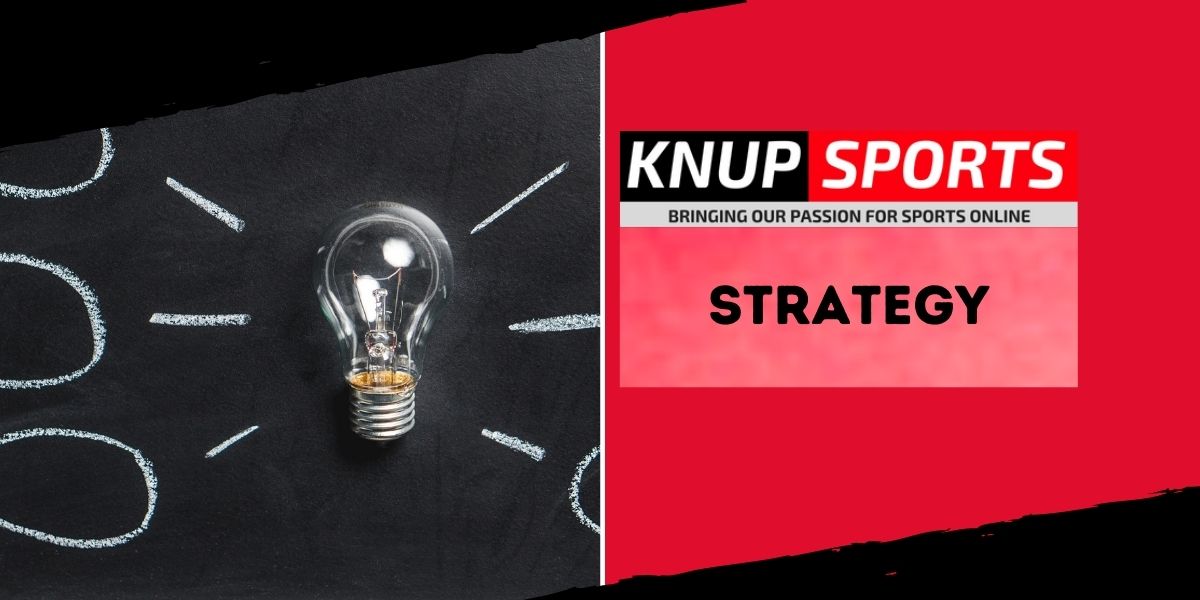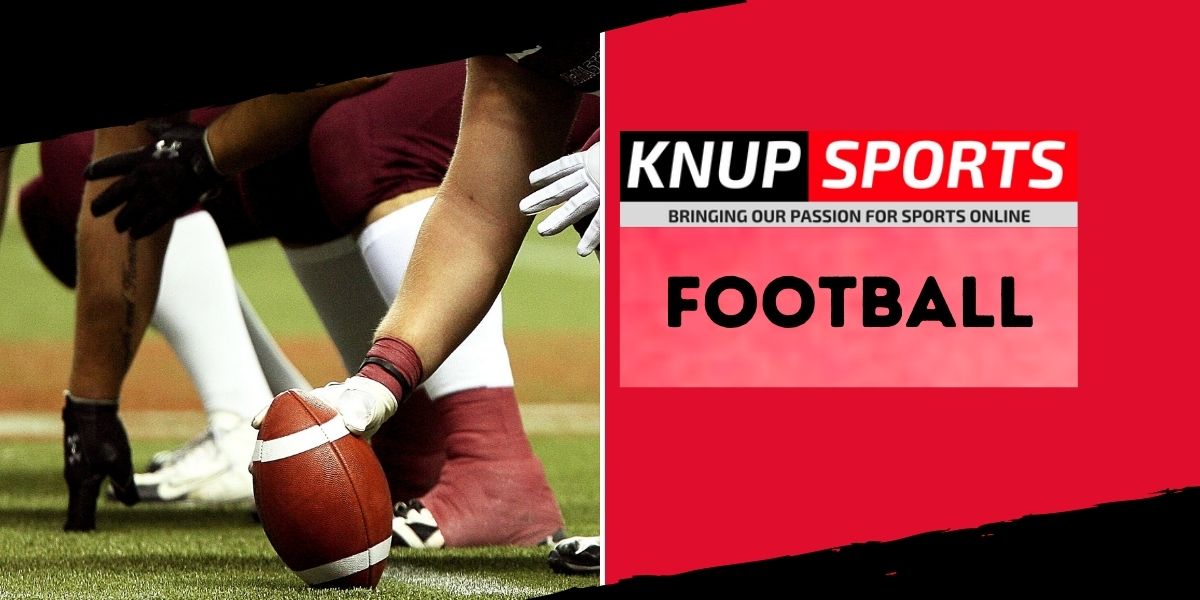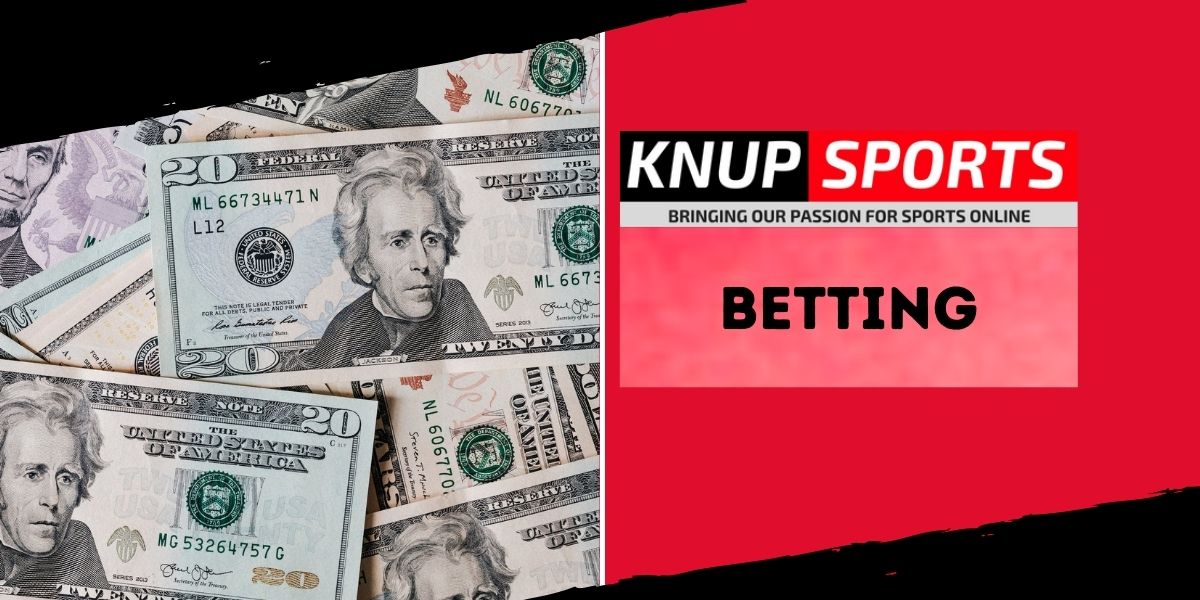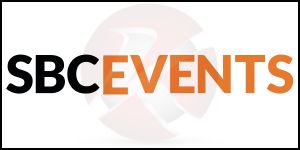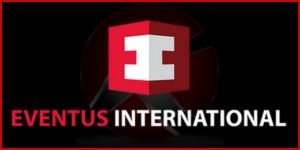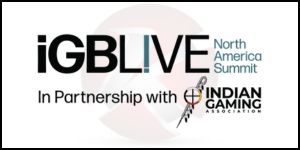VP of Product at Fansure, Jordan Pascasio, joins the Knup Sports Show to talk about his journey in the industry and the progression of products at Fansure.
Show notes from Jordan Pascasio Interview
Ryan Knuppel: Welcome back to another episode of the KNUP Sports Show. I’m your host Ryan Knuppel here with you each and every time. Today we have another special guest with us. We have Jordan Pascasio with us, the Co-Founder VP of Product at Fansure, Jordan, thanks for joining us.
Jordan Pascasio: Thanks for having me. Really excited to be on today.
Ryan Knuppel: I’m super excited to chat with you on the show here. I know, we talked several months back, and I really love what you have going on and some of the things in the mobile app space and now with Fansure that you have going on and we’re going to get into everything that you’re doing. How are you hanging in there with this COVID outbreak? We keep thinking we’re getting past it, and it kind of spikes back up. And we’re questioning it again, how are you dealing in business and in life with the COVID pandemic?
Jordan Pascasio: We are doing all right. As expected, it’s definitely a little bit unnerving to see the recent uptick, and especially what’s going on over in Europe. When I think back to earlier this year, they’ve been the precedent in terms of how things might materialize here in the US. So the fact that they’re enforcing some lockdowns and select countries already, and a couple that with the large amount of daily cases in the US, it’s certainly a little bit nerve wracking, especially as it relates to how that’s going to affect the NFL season and perhaps the return of the NBA season and the NHL. It’s definitely something to monitor. I think, personally, I’m doing okay. Just given the fact that everyone is on a remote basis, right now, I had a unique opportunity to move temporarily out of LA, which is where typically based. My girlfriend and I are actually spending some time in Hawaii, just getting away from it all, because we’re able to work remotely. So, I kind of got a sweetheart deal down here at a little unit near the beach. We’re just working here and on the island. So ,it’s been good. Trying to take stress away from COVID.
Ryan Knuppel: I would say you’re making me jealous already. I mean, come on, Hawaii. That’s such a beautiful area. I spent some time there last year and really enjoyed it. And like you kind of was able to work remote and what better place to work. I mean, such a great climate there in Hawaii. What Island are you on? Where are you at over there?
Jordan Pascasio: Oahu Island, a town called Kailua. It’s on the east side of the island. It’s been great. It’s a little tricky with timing. I have some engineers that live on the east coast. So waking up at weird hours of the night, but yeah, it’s definitely doable and great.
Ryan Knuppel: A little different pace there in Hawaii than there is in LA, right?
Jordan Pascasio: Certainly. Yes it is.
Ryan Knuppel: Pace of life is definitely a little more relaxed.
Jordan Pascasio: It’s interesting, because after college, it’s been almost six years in New York City and then moved to LA. Obviously now I’m in Hawaii. So, you think about that regression of pace from city to city that is pretty interesting.
Ryan Knuppel: That’s amazing. Let’s hear a little bit more about yourself. You are the co-founder of TRNDS Sports now co-founder and VP of Product at Fansure so definitely in the sports betting, you know, and that type of space, I want to hear a little bit about your background. How did you get started in this space and what brought you to where you are today?
Jordan Pascasio: Happy to run through the background quickly here. So, I went to Villanova. Post-graduation, I worked in New York City, I worked in investment banking for almost six years. I sat on what’s called a debt capital market. I did a lot of advisor restructuring for Fortune 500 companies looking to raise capital. At the end of the six-year tenure, I just made the decision that’s not what I wanted to do for the rest of my life. It was a great foundation and afforded me a good life. But I didn’t want to be a managing director and take that whole path and not have explored other options of things that I may be passionate about outside of that line of work, right. So, I had an interest in being closer to the value origination of a company. And when you work at a bank, you’re very much a cog in the system, especially in early years. And I was really interested as a result and looking at early venture and tech and I had, I was dating someone else at the time and still dating that person, but at the time she was in LA and I just happen to also discover that LA had this burgeoning tech scene and there was a lot of opportunity to get in on the ground floor and the startups within that ecosystem. I explored for a little bit, and then just kind of made the jump for it. So, I moved to LA without a job in hand, but I knew there was a lot of opportunity there. Within a couple months of landing in LA, per se, I was able to get a job doing financial strategy at a cleantech startup. And I did that for about a year. And it was great man. I mean, it’s talking about a change going from a global investment bank to a company of less than 100 people was pretty wild and sobering, if you will, and at the same time, it really cemented my interest in being at that stage of a company and understanding how startups operate and connecting the dots between different business verticals, products, sales, engineering, etc. So that really opened my eyes up to how these startups operate.
And then at the same time, I liked it so much that I was like, hey, I should start a side project and work on something I’m passionate about, because I think it would be really good to build out my product management shops. And at that time, it was 2018. The Federal Legalization just happened in terms of sports betting, and I had always been a huge fantasy player, and just sports fan in general growing up playing sports, playing fantasy sports, all things sports. I really started to gain an interest into looking into sports betting. And just given my background, I was always this combination of like, sports fandom plus analytics and analyzing player performance, team performers and stuff like that to kind of predicate my decisions in my bets. The problem that I was trying to solve at the time was back testing and being able to make that process easier, it was really hard for me to go out and figure out how the Celtics performed as a road dog over the last 10 games. It was figuring out how to learn SQL, if you’re familiar with that product, or manually scraping data by yourself and keeping on proprietary Excel sheets and stuff like that. So, I wanted to build a better solution around that I was interested in going over mobile experience where within a few taps, anyone can be able to access this type of data. So, more data transparency for team based trends. And that’s basically what I set out to do. So I don’t mean to abridge the story too much, but I created a roadmap, pitched it to a few folks and happened to get an early win by getting into sport radars accelerator program. And then from there, it was off to the races, we had the data teamed up with a few folks to build the product.
And we’re out in Fall 2019, with the iOS application that allowed users to very quickly uncover team based trends. From there, into the winter, we released NBA functionality, we’re seeing good engagement in the app, and we started to kind of snowball and get traction and interest and stuff like that, right. And this carried through the NBA season all the way to January, February, and then March. And then that’s around the time that we started looking to do our first fundraiser, so we’re looking to do a pre seed round. And using some of the traction that we had garnered over the past couple of months to help bolster our pitch and our vision and things of that nature. I think it was like March 13 or March 15th. I remember I was streaming a game watching the Mavs game, when the whole Rudy Gobert incident occurred and subsequently sports shut down. As you can imagine, that immediately threw some cold water on our fundraising process. So at that time, things were looking pretty daunting for us in terms of the future of the company. So I’ll take a pause there, and I just laid out a ton of information for you.
Ryan Knuppel: Yeah, that’s an incredible story. I mean, thank you so much for sharing all of that. I love success stories like that, you have a vision and you take action on it. A break has to happen along the way in any entrepreneurial journey like that. But just the fact that you were able to take a step and jump in and kind of take a passion and run with it really sits well with me like that. I love that part about your story and what you’re doing and, and also the sports data space. Personally, that’s one of my passions as well, that maybe I’ve never really acted on it fully. And so, I just completely love everything about what you’re doing. So I’m curious to hear more now. So, I know, TRNDS Sports, it was a great app. It was going but I’m curious to hear the next progression that kind of got you to where you are today with Fansure.
Jordan Pascasio: Yeah, happy to talk about that. I guess I can continue on this story art. We were trying to figure out what’s the next step for this company. We basically hit first the situation that we were facing at the time. So, this was back in March and April, we had no more sports, and we had no foreseeable future date when sports are going to return, right. So as a result, we then had no users, because if there’s no sports, no one’s really looking up, or any type of analytics or insights to base any type of bet on sports, right? So, it was tough, the uncertainty was killer. And you saw, it was obviously across all flavors of investing, whether it’s early venture, or even, institutional investing, and even the stock market at the time was incredibly volatile. So, it was tough to paint a clear path forward. And for me, it was tough, because, I’m thinking about, okay, I just left this career in finance, and then went into tech in early retro and then started my own thing essentially went a whole year on basically nothing trying to build out this stream, and we finally started to get some good traction, and then COVID hit and, my options, what do I do? Do I just try to wait it out? Do I continue to wait until the fall when maybe sports will come back? Or do I just stop and dissolve the company and go back and get a corporate job, like there’s all these different questions running through my head and trying to figure out what’s the best for this product, what’s the best for my career, what’s the best for my personal life. A ton of considerations to think about as it relates to that time. And ultimately, like I, I just wasn’t ready to give up, I believed in the product that we’re building, I believed in the problem that we’re solving, at least on the consumer level at this time. So, I tried to figure out creative ways to keep it alive. I was talking to different people in the space founders, advisors, investors, etc, just trying to get advice, essentially.
And it was interesting. One of them I had known, another founder in the space, we shared a technical partner, at one time, this founder had started a company that was in the ticketing space, specifically ticketing protection, so they are offering protection to fans, if you were to buy tickets to go see, let’s say, a Clippers game. And let’s say that Kawi Leonard sat out to load management, they would ensure that events just so that you’re not paying for experience that it’s kind of diluted from what you expect it upon purchase. And it’s a cool idea. And then a lot of great advisors behind them. (Inaudible) Marcellus Wiley, it was a great team, they’re actually made up of some ex NASA data scientists that all came together and wanted to build this ticket prediction product. My product was certainly affected by COVID as everyone else in the sports, sporting space and sports tech space, but think about someone who’s in the ticketing space, let’s look at today, for example, sports are back. But for the most part, fans in seats are still not a thing. Their business model was really affected in a terrible way. And they had this great technical team, and they just wanted to try to apply their talent to an adjacent market, because they really had something going with the team that they assembled. So naturally, when you think about adjacent markets, when they’re already doing a predictive analysis around injuries and load management, load management and stuff like that is, you know, they looked at the gaming space or looking at sports analytics, DFS analytics, stuff like that. And he had just called me and wanted to pick my brain on the best way to enter the space. So, we went on to have like an hour conversation, we chatted about different ideas, blue style ideas, more low hanging fruit ideas, and then at the end of the call, just went really well. And we went our separate ways. And then the next day, he called me and I was like, Hey, I really loved that call yesterday, I had this thought kind of circling in my head and I wanted to get out to you. What would your thoughts be in terms of just us acquiring you guys getting access to your IP and using that to essentially accelerate our entry into the sport, sports gambling space?
There’s, I mean, at first, I was just like, I didn’t know how to react to it. Because, you know, when you start something and put blood, sweat and tears into something you don’t see it like you don’t want to give it up soon in terms of not being the sole visionary anymore, but then at the same time, I took some time to chew on it and just strategically think through Is this the best path forward for me to continue to pursue? What I’ve built out and my vision? At the end of the day, I decided it was, there wasn’t anything else elsewhere. I mean, it was just this, it was either to go and get a corporate job, or I continue working on this product via this acquisition. So I really liked that team, I spent another week or two just chatting with those guys getting out every single one of their team members. And I got started to get comfortable with the move. And essentially, we made the decision to do a business combination, which is great.
Ryan Knuppel: Yeah, that’s amazing. I’ll interrupt there. That’s amazing. Congrats on that, first of all, I mean, so young of a product and to be able to be acquired. Obviously, they saw something good in you and in the product there. So that’s pretty cool. And I appreciate you sharing such detail of your story, you went into detail. I think a lot of people listening probably can relate to at least pieces of your story, right? If you’re an entrepreneur in this space, I’m sure you can relate to some pieces of Jordan’s story here. So, you know, let’s move beyond the story. Now let’s talk a little bit more about the products that you have going on. Let’s talk a little bit deeper about, I guess where you’re going. How do you see these being used within the betting and DFS industries, and maybe some future, talk about what you have going on?
Jordan Pascasio: I appreciate the kind words, it wasn’t the easiest process, but it gave us a chance to keep fighting on. So in terms of products. Yes. So the original product was the consumer product, it was the mobile application, mobile back testing tool, if you will, that allows users to, for better or worse, create their own systems and understand and analyze certain historical profitability for teams across various tables. It was interesting, because the first version of the product was, it was there. I mean, it was, even when I first validated this product, right? You think about from the very beginning and the origins, I had set up my own database, literally living locally on my device, it was just an SQL database. And I had just had a huge text group of my friends, right. And I just said, Hey, any TRND you guys want, just throw it in this group. And I’m just going to run a few locally and send it back to this text group. So I had a bunch of buddies, there’s about 20 people in this text group just every night asking for Hey, how are the Thunder against the spread after a loss? How are the Falcons as road dogs, and it just kept coming and coming and that request traffic got to a point where it was like, Okay, this is validated enough in my mind that I want to, you know, build this out. So when we built it into this mobile experience, like our whole goal was to help drive conviction, you know, for betters, on or off of a bet and making that transparency or access to data. So no more trying to teach yourself sequel or SQL or anything else. It was just a few taps, get your data. And it was interesting because when we first launched and we very quickly found out it only really resonated with a certain niche group of betters, right? It’s those betters that already aware of the scenarios that are in play, and then go in and they want to look at different variations of systems, but for the common bettor, like, you know, the common bettor is astute enough for the full slate of games every night to know like, hey, the Celtics are on the road, and they’re coming off a loss. And I’m going to take that knowledge and then build a system like not like we saw through the KPIs that we tracked, right. We were looking at weekly active users, daily active users, and only a portion of those active users, whether it be weekly or daily, we’re actually running searches that are like, you know, A- What are they doing with all kinds of searches online and the application? B – How do we create a better experience through mid searching or discovery easier?
So that’s what we worked on all of this summer, we built essentially a search recommendation algorithm that’s going to basically find the most contextually relevant trends for each week. So if you’re going into this week, we get in the NFL, and you go into the app, instead of requiring you to build a system yourself. It’s going to give you a long list of suggestions for hot or cold trends, because we’ve already determined where those are, and it’s up to the user to kind of look at those, analyze them or tweak them as they see fit. So it’s making that discovery process a lot easier, no more, you know, building a system yourself. And it’s interesting because as we built that over the summer as a new feature in the consumer app, we had this thought, because we built this algorithm to extract these trends, right? It’s like back testing thousands and thousands of scenarios every day. And we’re like, why don’t we apply this to potentially like a B2B product. And it began as an experiment, right? We had this really happy simple product, where every day we just used that algorithm to output all the things we would call our trend score, which is this algorithm that’s going to rank every single trend that’s relevant for that day’s slate of games, and we were just output it into a CSV. And we’re shopping it around, right. So any type of sports betting media companies that may have use cases for this data, whether it’s for content injection, for long form content, and podcast videos, etc, we will try to market this product to them and say, every day we’ll send you this CSV, and you can basically filter and find all the data, you want to put it into your content. And, again, it sounds super hacky, right? It’s like an email, you know, digest with a CSV, but we started to get traction, even on that product from some pretty big names.
It was cool, because we started seeing some of our data being used in articles and platforms that I had just previously used as a better fan before. So it was, it was cool to see. And then that gave us a little bit more validation to say, Okay, let’s, let’s build this. Let’s look into this B2B space a little bit more. So we started with his team trends that were being outputted into a CSV, and then the next step was, okay, let’s, let’s think about player club trends, right? Because that’s, that’s an emerging market, right? In the US, it’s becoming more and more liquid, especially for the big, big name players. And in the big name, kind of stat categories, pass yards, rush yards, pass cities, more and more people like these markets, it’s a little bit more relatable for the new the new betters coming into the space, I came from fantasy plus daunting, then you know, thinking about. What about taking sides or totals, it’s just like look at player props, because that’s pretty relatable to what I was doing before when I played fantasy, right? So we saw a lot of opportunity in the prop space in terms of, you know, addressable market. And then we said, okay, let’s take the same framework that we do with the teams and use it for player problems, right. So we’re looking at certain players, and just seeing different lines from different operators, and basically, are able to say, Matt, for example, Matt Ryan, and his last five games have exceeded his passing outs, prop line, and primetime or something like that. So we’re able to extract these same trends within related supply or pop trends and their ability to cover lines. And so we did the same thing with the theme stuff. So we built that functionality out putting it to CSV, and again, got some interesting traction. And where we are now is we’re closing in on a partnership with a large data provider that will help us from that will provide us distribution, right? So, I’m not really at liberty to speak to the deal until we actually finalize it and sign on the dotted line. But we’re certainly very excited about it.
And what’s going to happen now is our insights are going to be available and integrable at scale through API’s. So that’s kind of the next step for the company. And it’s an interesting step, right? Because we now enter this land and we have this traction and B2B, we’ve had existing traction to B2C and with all the new features that we released this year and the mobile app, it’s the end of all the engagement and retention and other internal KPIs that we track and have been doing really well. But it’s like, we’re still so young. So we need to make a decision between Okay, do we double down on B2B? Or do we double down on B2C? So that’s really what we’re approaching these next two months within terms of trying to figure out what’s the best path forward for our company, and what should we go all in on? And it’s been interesting, it’s been stressful, right? You’re managing kind of two different business verticals. But it’s also, you know, we try to glean all of the advantages where we can so for example, the B2C app we recently launched a player prop insights feature within that app. And we’re actually able to instrument the app to a point where we can use the insights and the user behavior insights from the app to help refine the algorithm that drives our B2B product, right? So we can understand, you know, what type of player pop trends are driving best engagement right conversion rate and stuff like that, and then use that, that insights to help refine the way that our algorithm scores, the trends that serve the B2B list. So it’s helpful in that way, right? But it’s just a ton going on. We know we’re cognizant of the fact that we need to be able to identify and have one core competency going forward. So it’s been an interesting period, but a fun period to kind of have all these experiments going simultaneously to figure out where is the best traction?
Ryan Knuppel: Absolutely. Jordan Pascasio the VP of product at Fansure. Jordan, one of the things I took away from your conversation, even just from what you just said, I mean, one of the big things, I’m always listening and trying to get common themes, of how entrepreneurs and people operate. And one of the things that I took away from that is you don’t always have to have the perfect solution right away. You mentioned it two or three times throughout there, where you’re like, oh, it started as a hack. It was just a hack. It was a spreadsheet, I was sending out this or I was sending out that. And you kind of went down that path of starting as a hack. And it turned into what you have today. And I think so many times in business, people are scared to like, do it as a hack or scared to kind of just try something kind of, if I may say half assed, right, they don’t want to even try that. They want it to be perfect. And I think sometimes you learn a lot from the hacks, right? You learn what works, what doesn’t, and you just get something out there. There’s a lot to be said for that. I’m not saying it’s always the right solution to do it that way. But I thought that was a cool thing that you guys and you yourself used throughout business to kind of get to where you were today. So props on taking chances and trying some of those hacks.
Jordan Pascasio: Yeah, certainly, I think we always try to approach things like that, getting something set up as hacky and as lean as possible to get to a point of, you know, validation or no validation as quickly as possible, because then that’s, that’s kind of your biggest signal in the beginning. And I think what if I were to give advice to myself, you know, a year ago or something? It would be to always double down on that process. Right. I think in the very, very beginning, even going back to pre acquisition, what we, I think we had done enough validation around problem identification. I think we had actually developed a really cool solution, but we hadn’t particularly identified the permanent problem that it should be applied to. And this is, I mean, this is kind of industry agnostic. When you’re building products, right? It’s focused more on validating out the problem that you’re solving before you really go all in on building out the solution. And I kind of learned that a little bit the hard way, and the failures along the way, and, you know, the analyzing, metrics that pointed to the fact that, hey, there needs to be a change here, really accelerated that realization. I definitely think it’s super important to be 150% sure that the problem that you’re solving is real. And then from there, go on and build out your solution.
Ryan Knuppel: Amazing, amazing. So, before we get off here, Jordan, like I said, I do appreciate all the time you’re giving me here. This is an amazing conversation. And it’s good to hear. Before we get off here, though, I’m curious, we know this path isn’t always easy. We know there’s always challenges we know. There’s always things you’re looking for. Maybe somebody listening to this is out there and can help with a problem that you’re having. Give me one or two problems that you’re having or maybe not problems, maybe that’s not the right word challenges, or things that you may be looking for advice or help on, that maybe somebody listening may have an answer for anything that’s that stands out in your mind in regards to that.
Jordan Pascasio: Anyone that’s gone through, making decisions on figuring out, the core competency, and the path forward for a business that potentially has a couple is interesting. Like I said, strategy or strategy. We’ve been battling between B2C and B2B. My hunch is that the more the bigger problem solving, the bigger opportunity is within B2B and helping by providing contextually relevant information and insights. It’s more so around just the framework of that decision, and which signals should I be looking out for? I think secondly, just as we get more traction into B2B, this isn’t so much a problem, but anyone that’s in the space, whether your immediate platform or an application, just as many potential customers are not customers, but stakeholders that I can talk to in the industry just always better understand the problems that they’re facing, which is always super helpful for me as it relates to what we’re doing. I just like to get out and talk to as many customers as possible users in this instance. Anyone who’s just interested in chatting and talking about the pain points that they’re facing right now is always helpful for me as I think about how to refine our product.
Ryan Knuppel: Amazing. On that note, how would they get a hold of you, Jordan? What’s the best way to get a hold of you or your company?
Jordan Pascasio: LinkedIn is probably the path of least resistance to shooting me a request or a message on there or my email is just my first name @Fansure.com, Jordan@Fansure.com
Ryan Knuppel: Awesome. Amazing. Well, Jordan, I’ll let you go here. Before we go, any last words? Any last thoughts? Anything in the world of sports? You want to want to talk about it? Actually, who is your team? You have a team or teams that you’re following closely. I know right now we’re really only having football going on, but anybody that you would call your team?
Jordan Pascasio: I grew up outside of Detroit. So almost across the board on the Detroit sports fan and Pistons, Redwings and Lions. Lions have always been tough. Historically, renderings were great trying out but then I was a big baseball player since I was two, three years old. So I naturally grew up in the 90’s so I loved Derek Jeter. So, I was a Yankees fan growing up. So that’s like my one deviation. Sports are on the Yankee fan. It was tough to see them go down to the Rays this year.
Ryan Knuppel: What did you think about the baseball season with no fans? Basically? I mean, did it affect you as a fan this year, or what?
Jordan Pascasio: No, not so much. I really enjoyed watching the playoffs. All the way up until about two days ago as the Dodgers won. No qualms there. I thought they did a pretty good job.
Ryan Knuppel: Awesome. Amazing. All right, Jordan, I will let you go. I appreciate all your time here today. Listeners, if anybody wants to get a hold of Jordan, we’ll put all those links and we’ll put everything we have on him in our show notes. So, you won’t have to remember those you can get out there. But great story, Jordan. I really appreciate it and if you need anything from me don’t hesitate to reach out to me. Jordan Pascasio, Co-Founder, VP, TRNDS, Fansure has it all there. Jordan, thanks again for being here.
Jordan Pascasio: Thank you.
Relevant for Jordan Pascasio Links
-
Learn more about Fansure on their website: https://fansure.com
-
You can connect with Jordan Pascasio on LinkedIn: https://www.linkedin.com/in/jordan-pascasio-8b86324a/
-
Send Jordan Pascasio an email: Jordan@fansure.com
More Knup Sports Links
- I refer to Knup Sports often in my show. That’s our sports passion site. Check out KnupSports.com here.
- If you are looking for my services you can find more information on the Knup Solutions website.
- Listen to more episodes of the Knup Sports Show.
- Want to be a guest on our show? Setup a time that works here.
- Subscribe to the Knup Sports Show on iTunes here.
Contact Ryan Knuppel
- LinkedIn: https://www.linkedin.com/in/ryanknuppel
- Email: ryan@knupsolutions.com

